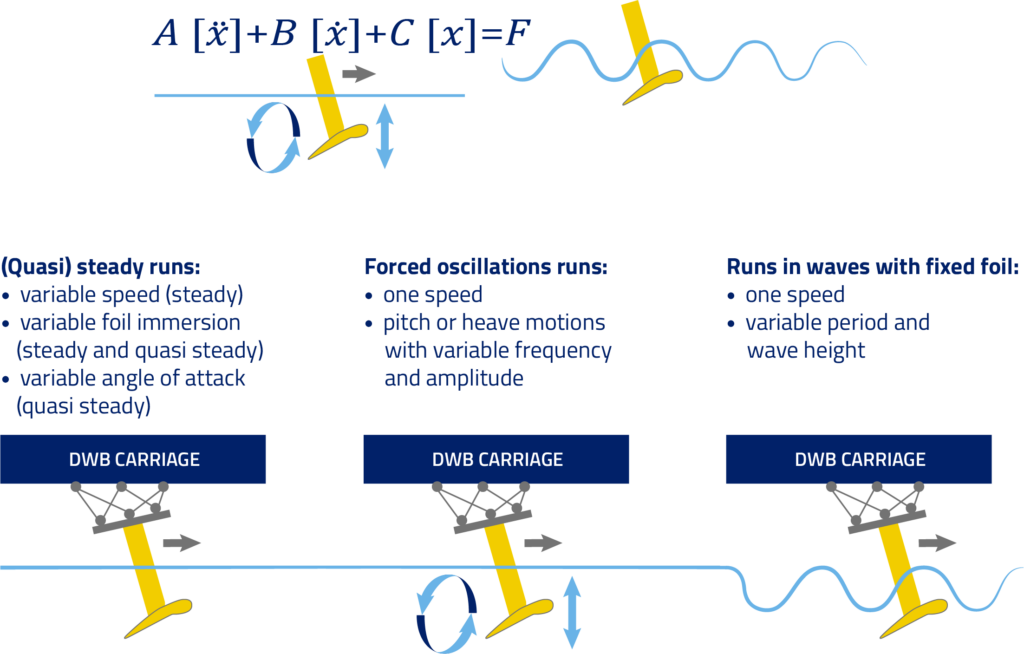MAR123 Foil Design
Summary
Hydrofoil technology has been known for decades. After a fast development started in the 50’s and peaked in the 80’s for military applications and passenger transports, new developments stopped and the current fleet is fading slowly, despite the obvious advantages in terms of improved seakeeping and resistance reduction at high speed. Recent large commitment into research of sustainable (towards zero emission) solutions and top nautical sprots have revived the interest in foiling. The latest technology advancements (such as new materials, computational capabilities and improve ride control) have set also the chance to extend the applications of the hydrofoil technology to more parties in the maritime sector than in the past.
In the past decades a very complete knowledge has been collected and mostly focused on the performance of hydrofoils in steady state conditions. However, there is still more work to be done in terms of dynamic response of hydrofoils in unsteady conditions.
The Foil Design JIP aims at achieving advanced knowledge which will assist the early design phase of new concepts of foiling vessels. The research will be focused especially on the performance of the hydrofoils in unsteady conditions.

Motivation
The aim for zero emission in fast transportation on the sea involves directly the hydrofoil technology with its advantages such as the resistance reduction. In general, the design of hydrofoil craft has to look at different operational objectives such as:
- Fast transportation of a large payload capacity with more extended operability (such as improved operation in higher seas states);
- Efficiency and sustainability (in terms of low fuel consumption or application of new sustainable propulsion solutions);
- Safety and comfort (such as increased seakeeping comfort with reduction of slamming/noise/jerk);
The hydrofoil is the first key element of craft and its correct configuration, since early design phase, is crucial to successfully achieve the aforementioned goals.
Goals of the project
The main objective of the research proposed in this HIP is to achieve advanced knowledge to assist the early design phase of new concepts of foiling vessels. The outcome of this research will be delivered in two forms:
- A data set of practical and contemporary foil design (geometry and performance data as output) which characteristics in steady and unsteady conditions will be available and usable for the set-up of dynamic control strategies.
- A prediction/design tool for hydrofoils, that includes information on the dynamic response (for hydrodynamic side, including some hydro-elastic effects). This tool is meant to facilitate early design decisions in the development of future foiling crafts. Focus will be mainly the type of hydrofoils that require dynamic control.
Innovativeness
In the past decades a very complete knowledge has been collected and mostly focused on the performance of hydrofoils in steady state conditions. However, there is still work to be done in terms of dynamic response of hydrofoils in unsteady conditions, particularly in the eventual presence of cavitation and/or ventilation. These aspects are expected to have significant impact in the foil design process and in the possibility to provide reliable designs to be used for a more extended range of applications.
Valorisation
All participants will use the products for their commercial activities. Involved research institutes MARIN and TU Delft will also present results in papers and conferences.
Duration of the project
08-10-21/ 31-12-2023